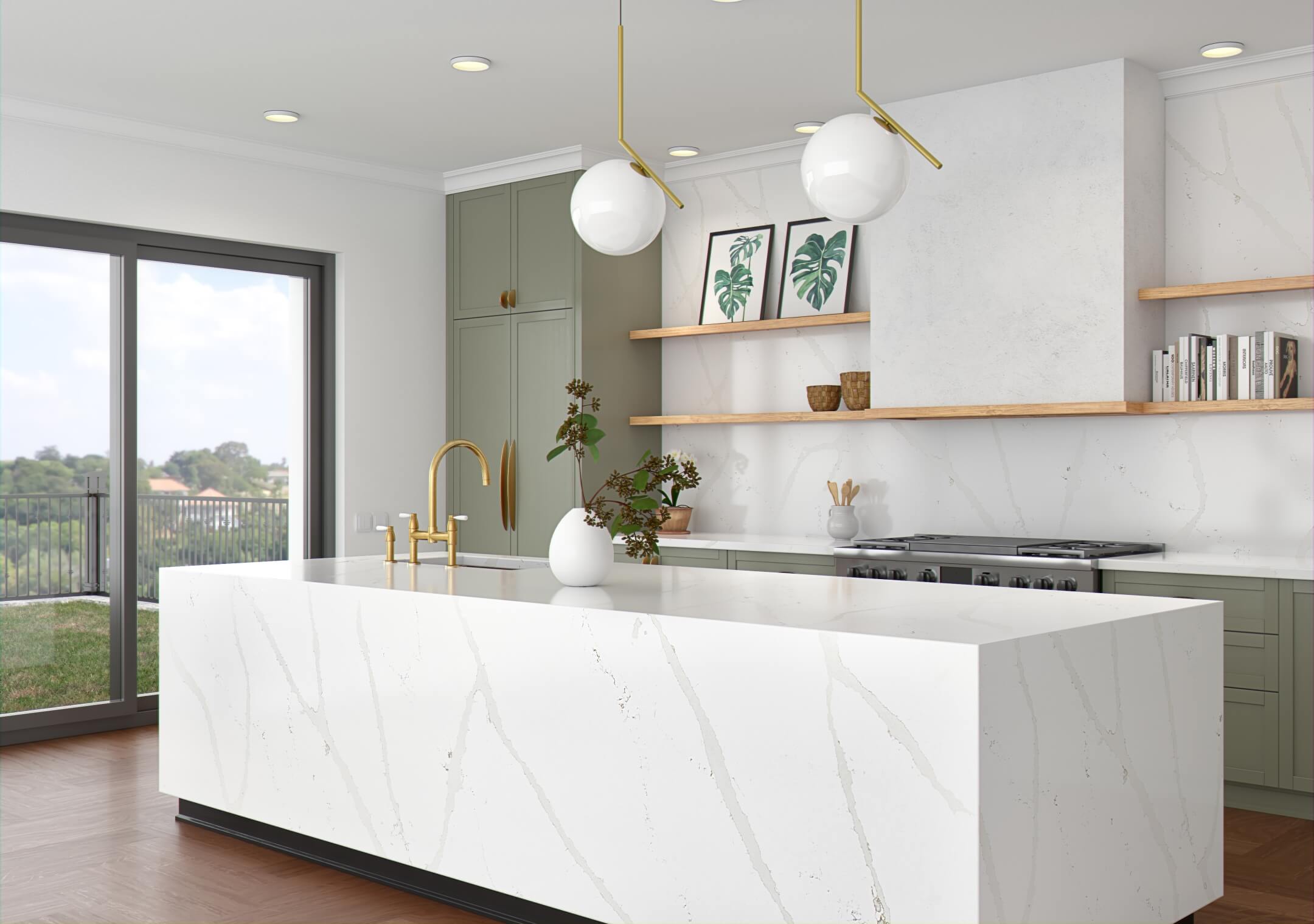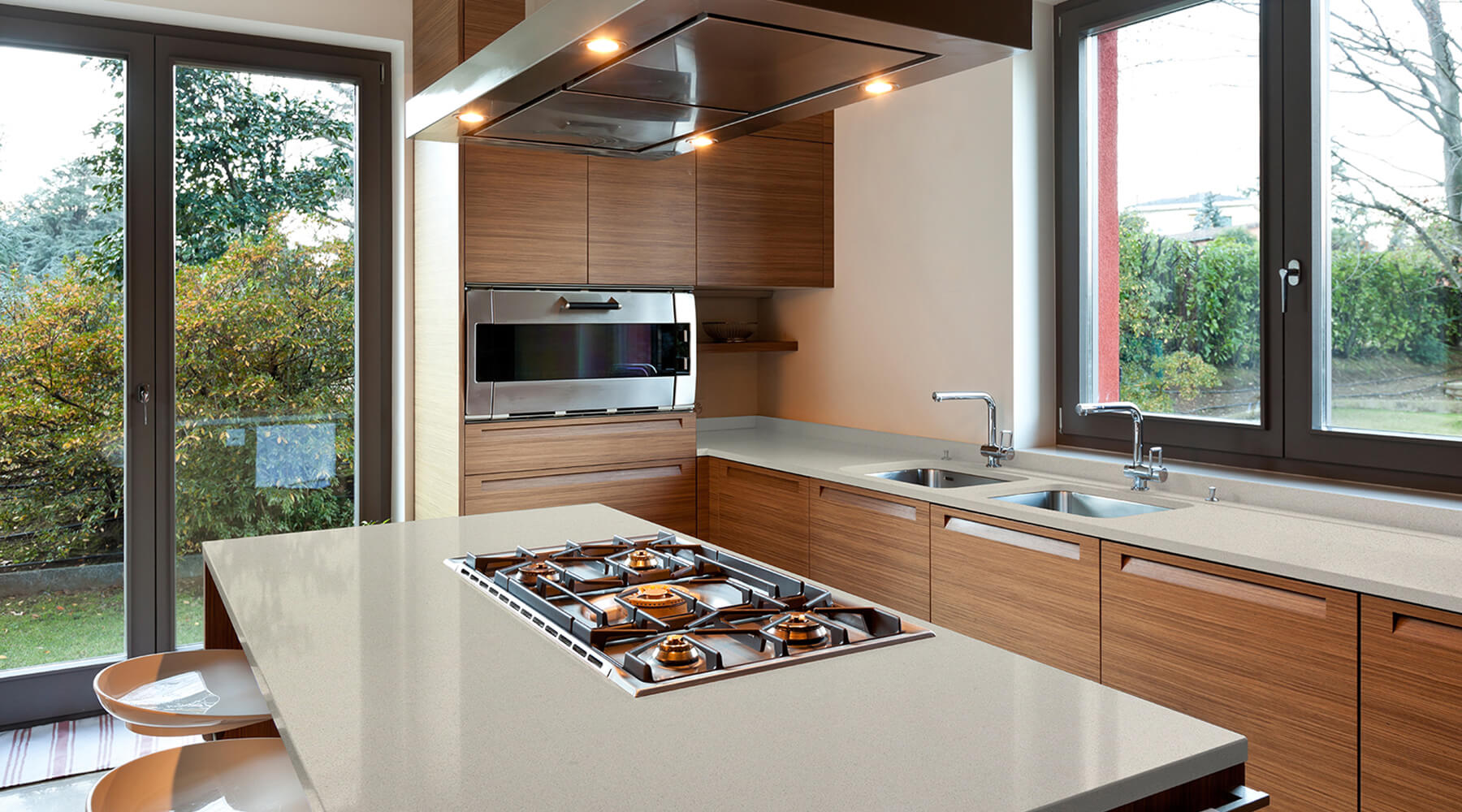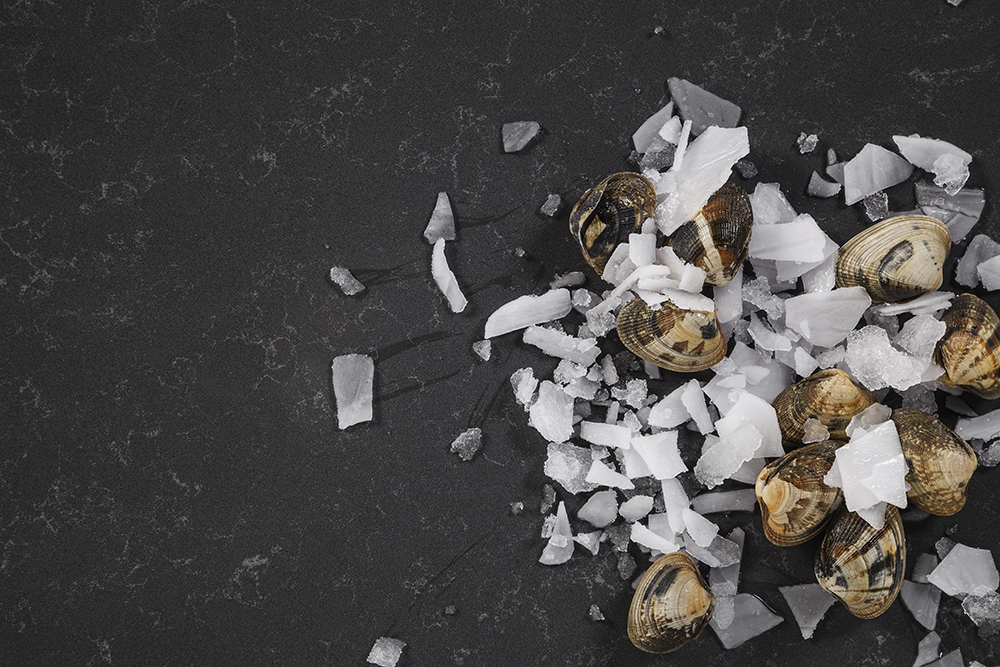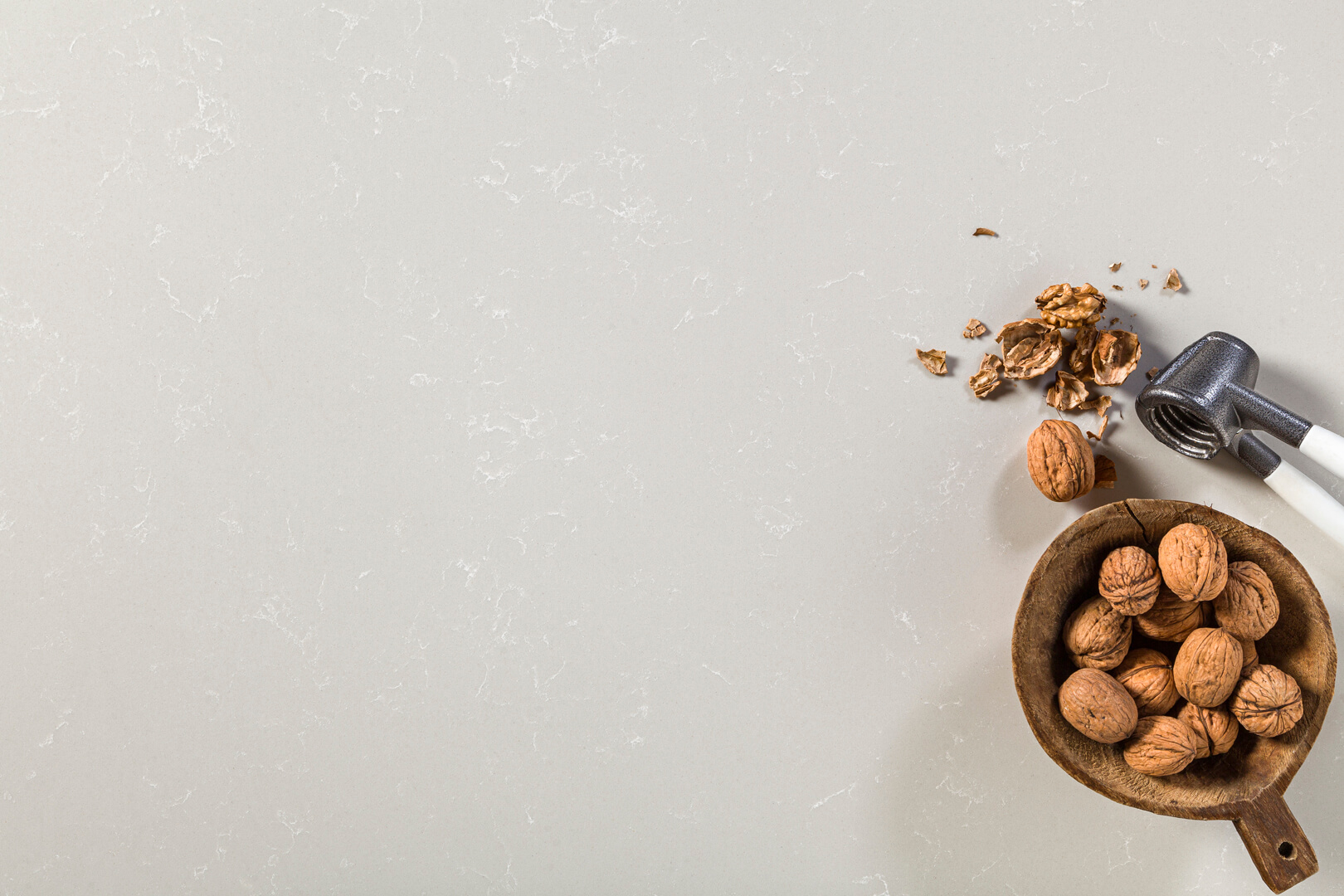Have you ever wondered what it is and if there is a difference between technical stone and sintered ceramic? That’s what you’ll read about in this AR Commerce article. These are two materials that have gained quite a lot of popularity in recent times and more and more people are turning to them for cladding various details of their homes, as well as for developing countertops for the kitchen and bathroom.
Undoubtedly both materials are strong, heat tolerant and do not scratch easily. They offer a number of benefits and unique properties, but what makes them different? Which stone to choose for your home?
Composition
Technical stone is made on the basis of various minerals, such as quartz, marble or granite. These materials are extracted from quarries and processed into slabs or blocks for further use in construction and design. The natural composition of the technical stone gives it a unique aesthetic appeal and sense of luxury.
On the other hand, sintered ceramic is a synthetic material produced by combining ceramic powders, metal oxides and various additives. The mixture is then subjected to high temperatures and pressures, resulting in a hardened and dense material. The precise composition and manufacturing process of sintered ceramics allows for greater control over their properties and characteristics.

Production process
The production of technical stone involves cutting and processing large blocks of stone into desired shapes and sizes. It undergoes a range of cutting, polishing and finishing techniques to achieve the desired aesthetic and functional properties. This traditional manufacturing process showcases the natural beauty and texture of the stone.
Here at AR Commerce you will find quartz based technical stone manufactured using Italian BRETON technology – by mixing quartz, resin and various dyes. This makes it extremely beautiful and durable.
Sintered ceramics, on the other hand, undergo a more complex manufacturing process. The ceramic powders and additives are carefully mixed to achieve the desired properties, and the mixture is then pressed into molds. The moulded material is then fired at high temperatures, resulting in the particles bonding together to form a solid ceramic structure. This process allows precise control over the density, type and strength of the material.
Physical properties
Technical stone is known for its high density, durability and strength. It exhibits excellent resistance to impact, scratching and abrasion, making it suitable for applications requiring tough and durable surfaces. Additionally, engineered stone is extremely stain and chemical resistant, which increases its appeal as a versatile material.
Sintered ceramics, which are also durable, have special physical properties. It is known for its relatively low density, making it lighter than natural stone and some other materials. Despite its lightweight nature, sintered ceramics feature remarkable strength and resistance to mechanical stress. It also offers excellent resistance to heat, UV rays and frost, making it suitable for both indoor and outdoor applications.
Applications
Technical stone finds wide use in construction for various architectural elements. Typically used for cladding exterior and interior surfaces, creating stunning facades, flooring, countertops and sinks. The natural beauty and durability of engineered stone make it an ideal choice for high-end residential and commercial projects, adding elegance and sophistication to spaces.
Sintered ceramics are gaining popularity in a wide range of applications. Typically used for flooring, wall cladding, kitchen worktops and bathroom surfaces. The lightweight nature of sintered ceramics facilitates handling and installation by reducing the overall weight of the structures. Its excellent chemical and stain resistance also makes it suitable for laboratories, medical facilities and other environments that require hygienic and easily maintained surfaces.
Difference between technical stone and sintered ceramic – Color and texture
Technical stone gets its colour and texture from the natural composition of the stone used. It offers a wide range of colours, patterns and veins, providing a unique and luxurious look. The inherent variations in color and veining make each piece of technical stone different and visually appealing.
Sintered ceramics offer a wide range of colours and design options. It can imitate various surfaces such as concrete, granite and marble. This flexibility enables designers and architects to achieve specific aesthetic goals and combine different design themes.

Difference between technical stone and sintered ceramics – Price range
The price of technical stone varies depending on the type of natural stone used and its availability. Some rare or exotic stones can be more expensive, while more common varieties can be more affordable. In addition, the price may increase depending on the complexity of the fabrication and installation process.
Sintered ceramic is a synthetic material and offers a relatively more consistent pricing structure. The price is usually determined by factors such as the brand, quality, design and size of the ceramic tiles. Although sintered ceramics can have higher initial costs than natural stone, its durability, low maintenance requirements and long life often make it a cost-effective choice in the long term.
Difference between technical stone and sintered ceramics – Maintenance and durability
Technical stone requires regular cleaning to maintain its appearance and protect it from stains. Although very scratch resistant, care should be taken and abrasive cleaners or harsh chemicals that can damage the surface should be avoided. With proper care, engineered stone can retain its beauty and durability for decades.
Sintered ceramics are inherently resistant to stains, scratches and heat. Its smooth surface makes it easy to clean. Sintered ceramic is also highly resistant to fading, making it suitable for outdoor applications exposed to sunlight. These qualities contribute to its durability and minimal maintenance needs, saving time and effort in the long run.
TheGeoslab sintered ceramics offered by AR Commerce are manufactured using Italian technology, with modern and sought-after colours and at an attractive price.

And which option should you choose for your home? Well, think carefully about your needs, your preferences, the design you are looking for and of course – your budget. Then, if necessary, contact a specialist to help you make the right choice. If you have any questions – do not hesitate to contact us!
Read more from the AR Commerce blog:
The best countertop for kitchen – How and why to choose quality?
What is the difference between technical stone and sintered ceramic?









